Architecture is the art and science of designing buildings. Nonbuilding structures are considered as architecture as well. You probably know that, right? Since the very beginning of the professional architecture a lot of magnificent projects were fulfilled. It always amazes to see a structure which could be called a masterpiece. To see the astonishing structures by themselves – this is one of the reasons why tourists travel around the world and take thousands of pictures of churches, palaces or skyscrapers.
This is where all the fun begins. It is way more different to have a picture in front of your eyes than it is to look at a building itself. Have you ever though for yourself – does everything that you can see in a picture really exist? Of course, you did – nobody can be sure about what they see in this age when almost everything could be edited with Photoshop or any other software for image editing.
Well, hold yourselves – we have some architectural views which you will hardly believe to be not real. These are some of the most photorealistic architectural 3D renderings on the planet. Fasten your seatbelts, open your eyes and let’s take a ride through this digital and artificial reality!
Vintage Whisky

Ankush Mittal
Ankush Mittal is not only a 3D artist who creates interior designs but also a photographer. Therefore, he has versatility to view things from different perspectives. Nice focus on the close up, difficult folds of sheet and neat textures - these are the things which make this 3D rendering great.
Software used: Max, V-Ray, Photoshop.
Archinterior

Evermotion
It is a very detailed 3D rendering of interior. Shading and lighting in it is extremelly professional. It was done more than 5 years ago and it is still a gold standard of 3D interior modeling.
Software used: 3ds Max.
Mies van der Rohe Farnsworth House
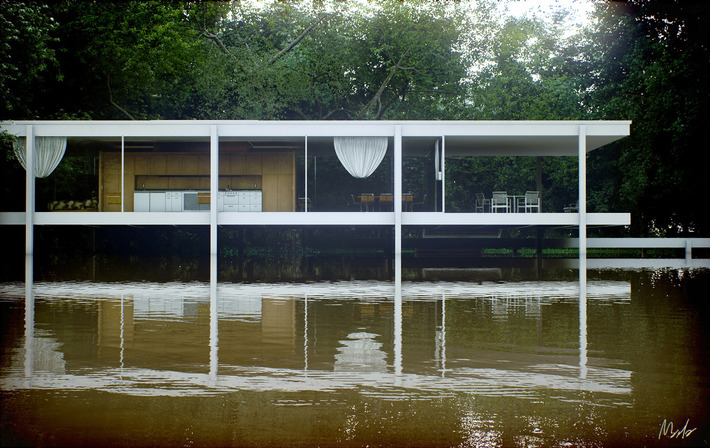
Alessandro Prodan
Alessandro Prodan started this reproduction to challenge his limits and preconceptions. As he told himself, he spent several time studying botany and techniques to represent light and composition. It is a tough task to make a photorealistic display of plants (especially - leaves). Therefore, dedication to study botany was necessary to make this picture look real.
Software used: Maya, Mental Ray, Photoshop.
Ouverture I-X
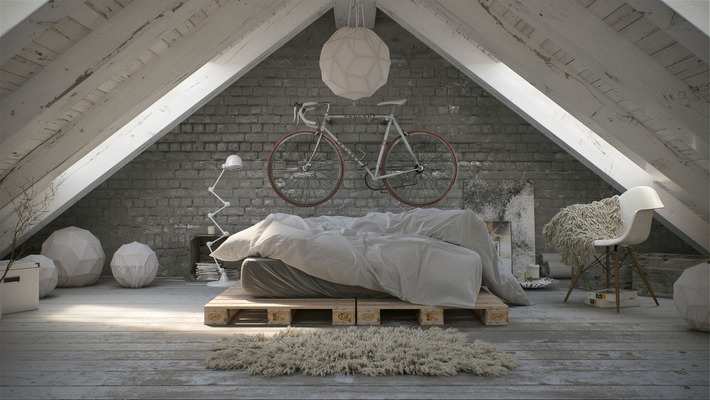
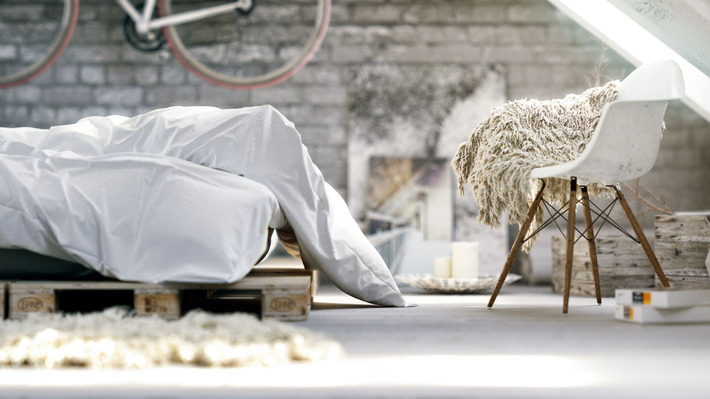
Michael Feuerroth
It took five weeks for Michael Feuerroth to make this fantastic 3D rendering. This project is based on contrast and ambitions of the artist to show it. This work consists not only visual but also grammar contrast. "In german, attic is called "Dachboden" - two words brought together. Dach and Boden means ceiling and floor. This was an interesting word as I thought about it - very contrasting. Then one thing leads to another: cheap - expensive, dark - bright, new - old, combined with a bit of atmosphere. Et voila," - said Michael Feuerroth about his work.
Software used: 3ds Max, Marvelous Designer, V-Ray.
Damavand Tower
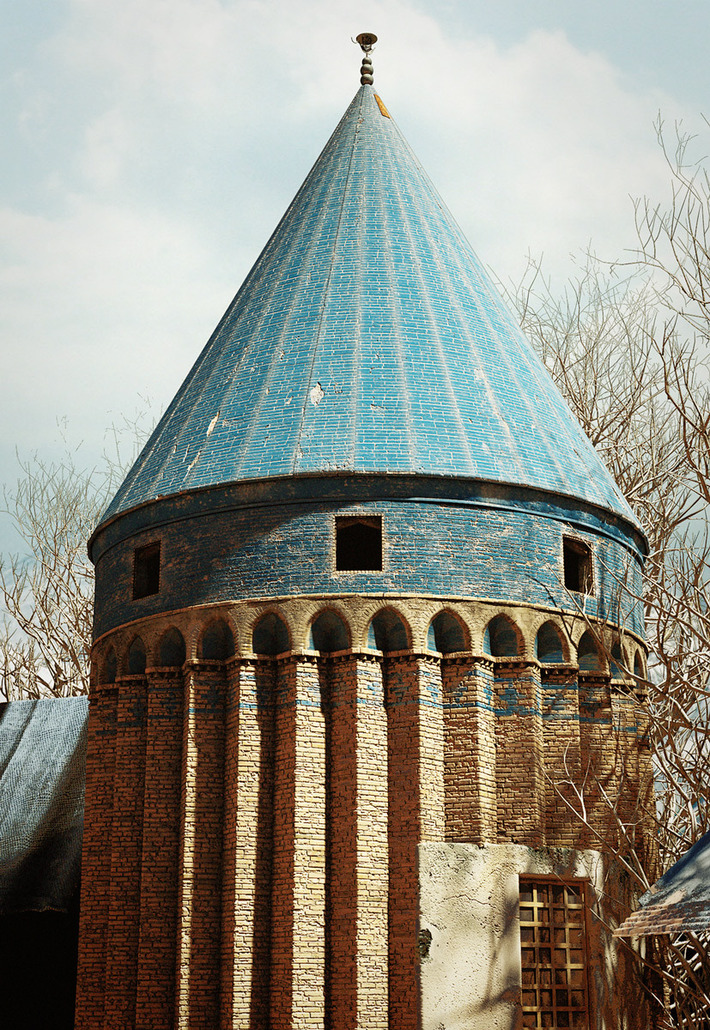
Alireza Seifi
This 3D rendering is 3 years old and it is insanely detailed. Amount of unique bricks leaves us jaw-dropped. Alireza Seifi, the author of this 3D rendering made a tutorial how to make brickworks which is based on his other 3D model. Accuracy is one of the trumps which this designer has.
Software used: 3ds Max, V-Ray, Photoshop.
Starbucks
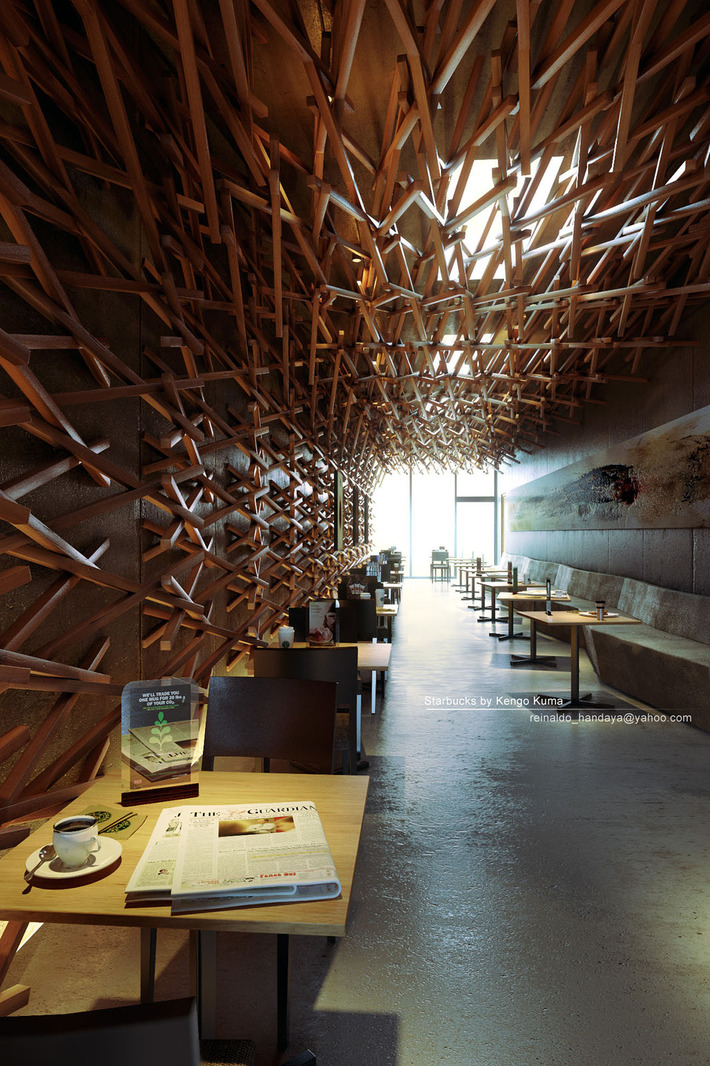
Reinaldo Handaya
Kengo Kuma's design reminds toothpicks. It inspired another artist - Reinaldo Handaya to take his digital toothpick and recreate something wonderful. So, he decided to create the rendering base from the image he got from internet. As the author told, he wanted to improve his rendering and postproduction skills with this project.
Software used: 3ds Max, V-Ray, Linear Work Flow, Adobe Photoshop, Magic Bullet.
The Courtyard
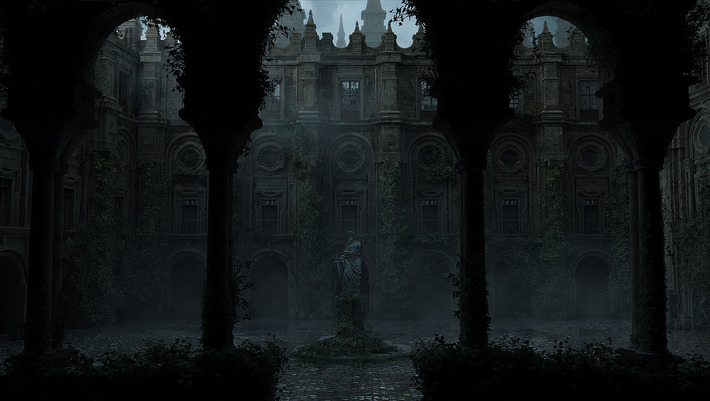
Anthony Eftekhari
This masterpiece comes from Anthony Eftekhari. It is incredibly detailed 3D rendering of the ancient courtyard. It wonders how the artist depicted so much details in dark colors. "I wanted to convey a mood with this piece that was a little unsettling and could create several different storyline possibilities," - said Anthony.
Software used: Maya.
Old WC
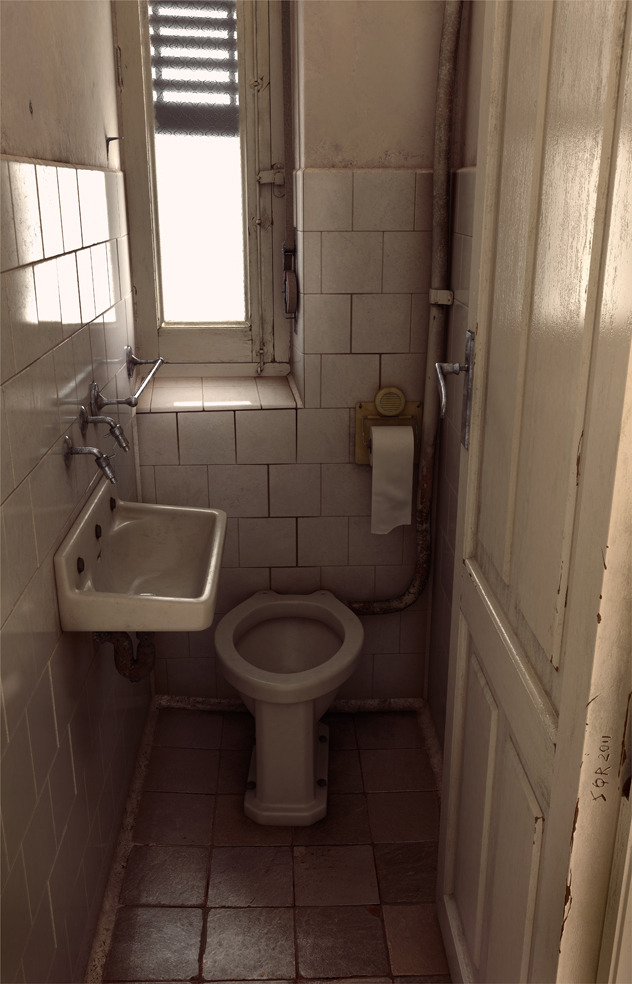
Juan Siquier
This is an awarded masterpiece. The best animago still of 2011. The author said that he wanted to filter the entire composition through his own personal style and create a rendering with a deep atmosphere – one in which CG illustration and artistic photography mix and generate a good balance. It took 24 hours to render it with a Quad-Core computer.
Software used: 3ds Max, BodyPaint, Photoshop, V-Ray.
Lonely Town

Shi Yao
This 3D rendering was inspired by a video game Assasins Creed Brotherhood. It looks absolutely realistic though. Shi Yao is known for photorealistic 3D renderings. His still images are always mentioned amongst the best by various juries. This one is not an exception.
Software used: 3ds Max, V-Ray.
Skyscraper
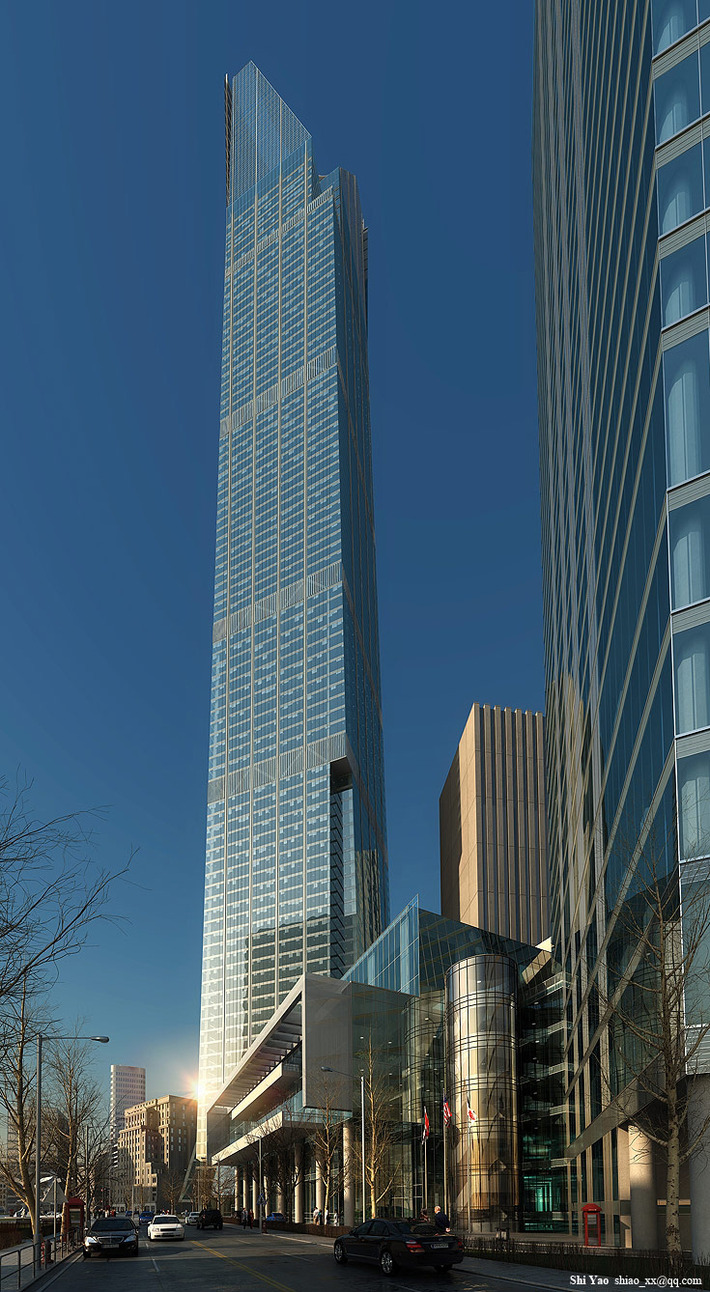
Shi Yao
Here we have another amazing 3D rendering made by Shi Yao and it is a rendering of a skyscraper. It is needless to say that architecture is the most favorite work field for Shi Yao. He is a respected architectural 3D designer.
Software used: 3ds Max, V-Ray, Photoshop.
Zavod Imeni Likhachova

Anton Turkin
Anton Turkin is a well known 3D designer from Moscow who is really hooked on photorealistic 3D renderings. You can see that if you browse his portfolio - there is a bunch of pictures where cars and other technique are depicted perfectly. The author admitted that he was charmed by the site of this factory which is depicted in the picture from the very beginning when he saw it.
Software used: 3ds Max, GrowFx, Multiscatter, Photoshop, V-Ray.
Creative Hub
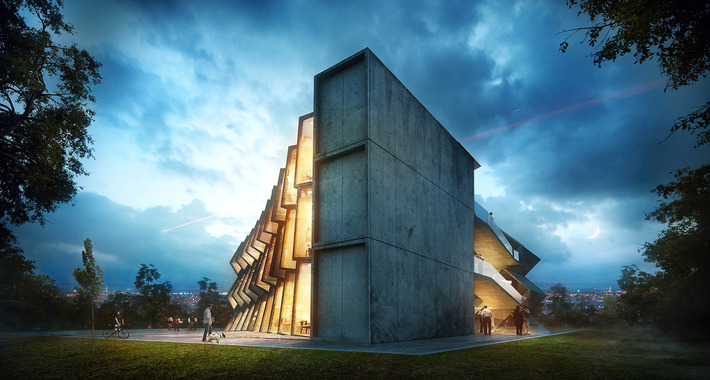
Sérgio Merêces
Creativity is something that requires creative environment itself. Sérgio Merêces made this photorealistic 3D rendering of a creative hub. This is what could be called a contemporary architecture and a contemporary photorealistic 3D rendering, of course. A lot of lights, sharp lines and innovations. Well done.
Software used: 3ds Max, V-Ray, Forest Pack.
Far Away From Home
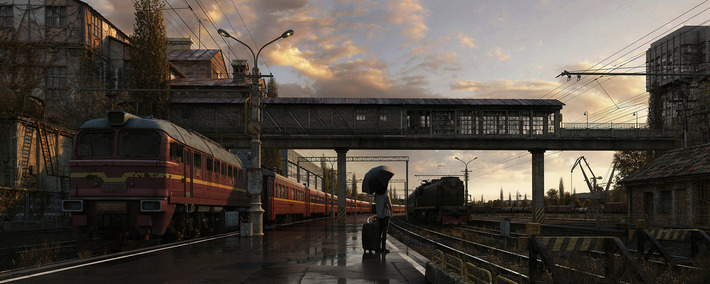
Andrew Averkin
Train station is a place where lovers meet after a long time of not seeing each other. Andrew Averkin did this 3D rendering while thinking about his wife. Her parents live very far away in Siberia and she has to travel a long way to get there. The distance is pretty huge. With this picture Andrew tried to capture those feelings of missing everything that is important to you. "A lonely girl standing in an old train station platform after a rainy day brings these emotions to the mind, yet the morning sunshine brings hope that soon we will be close to everything that we love," - said Andrew.
Software used: 3ds Max, V-Ray, After Effect, Photoshop.
Time Traveler's House
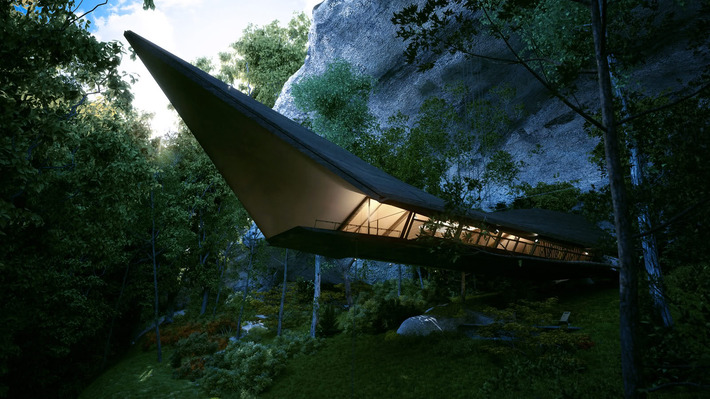
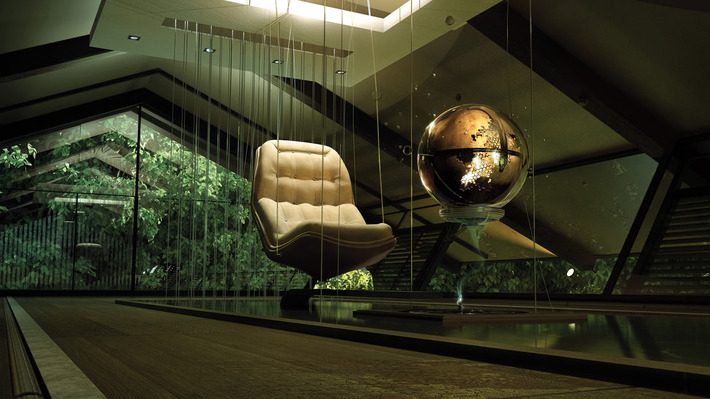
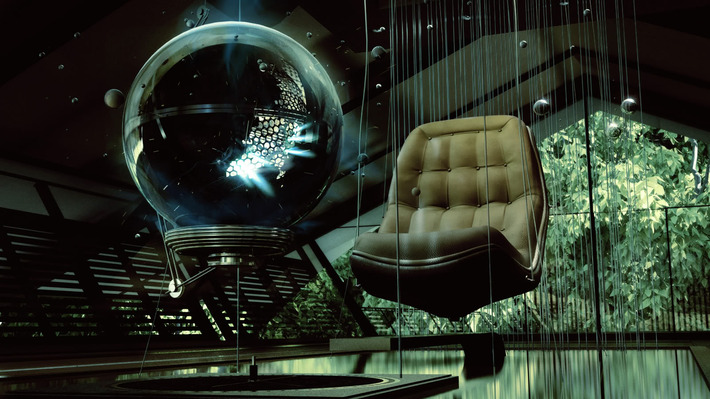


Tolgahan Gungor
The future is near! Tolgahan Gungor brings it with a futuristic house in the forest. It depicts a perfect interflow of architecture and environment. This rendering was made for Ronen Bekerman Hover challenge. Tolgahan told that it was very hard for him to make it. Sometimes he just threw away some samples after studying for 2-3 hours. Patience is part of perfection. Pay attention that trees do not have shadows in this rendering. It was done on purpose as the area is sloping.
Software used: 3ds Max, V-Ray.
Forest Refuge
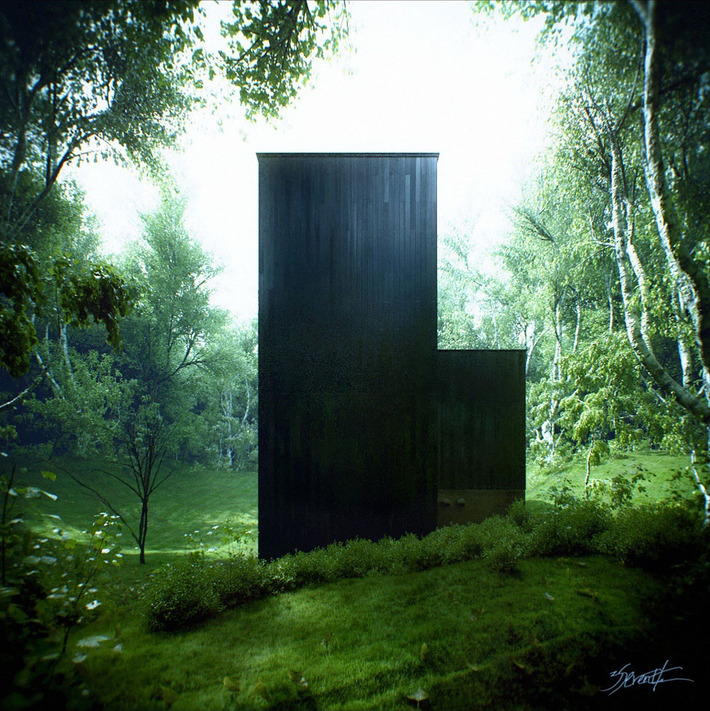
Alex Roman
You must be blind if you do not see how thoroughly designed it is. As Alex Roman told, his project itself has a several of POV showing three different time of a day (or weather). He liked the idea since long time ago, as it shows a sense of the art of architecture with the surrounding environment. "In fact, it has been a botanic exercise for me," - said Alex.
Software used: 3ds Max, V-Ray, After Effects, Onyxtree.
Dream House
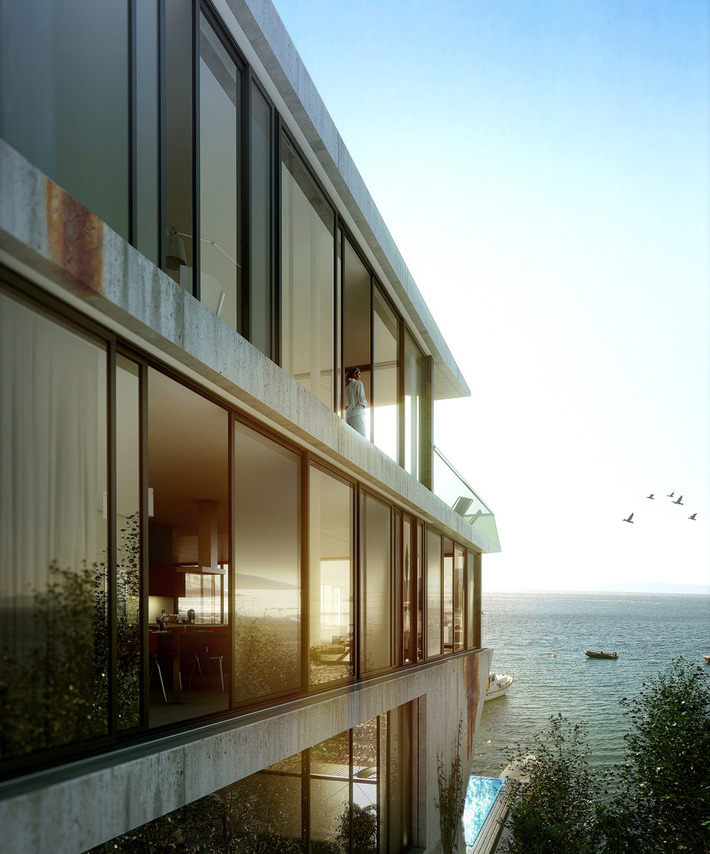
Juan Altieri
Ocean, sky and grey concrete. These three colors do not differ much. It is a hard task to create realistic contrast of these colors, but Juan Altieri, who started 3D modeling in the year 2000, did it very professional after 8 years of practice. Well, it was one of his goals. "I have designed this house, just as a try to make a modern look, to test some lighting effects, colour correction and render style," - said the author.
NY City Apartment

Marc Gruber-Laux
This one could be called 50 shades of white. No wonder that the author of it calls his studio Pure Render. It is totally pure. Shadings and color work are worth to take a deep look in this 3D rendering. Marc has passion for architecture and thorough understanding of details, materials, textures, interior design, lighting. All that leads him to create the most memorable images. We can see one of them here.
Software used: 3ds Max, V-Ray, Photoshop.
Coconut Bay
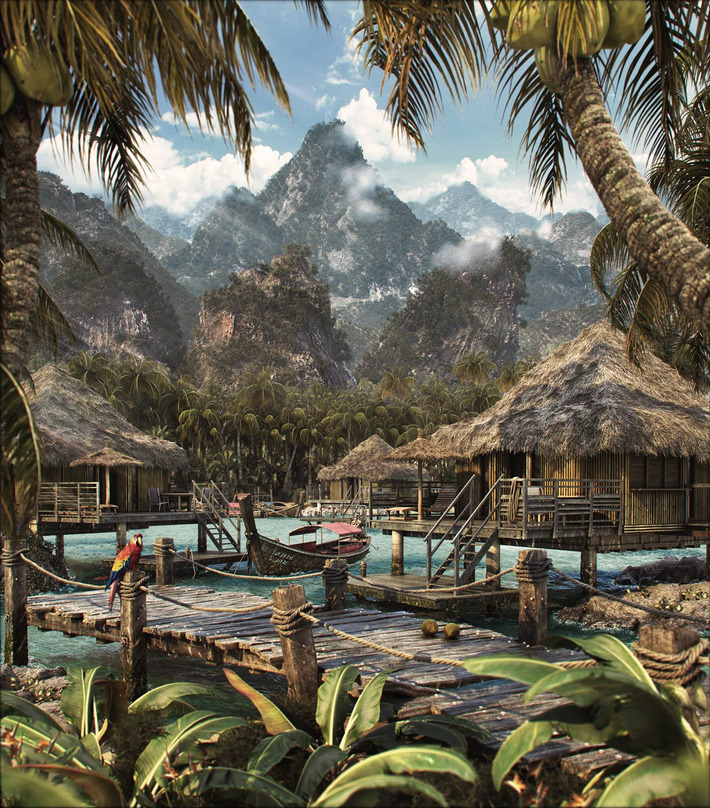
Jaroslav Cermak
Now this is more like a photorealistic drawing than a photorealistic photograph. Jaroslav's fellow 3D designers complimented him about doing great job with water, mountains and coconut trees. However, it would be a mistake to miss the composition and the roofs of these shelters.
Software used: 3ds Max.
Classroom Scene

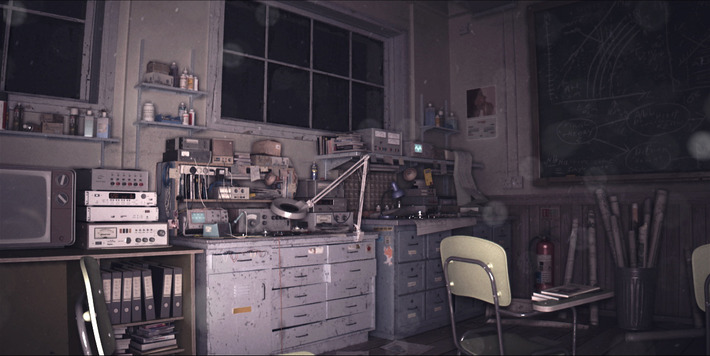
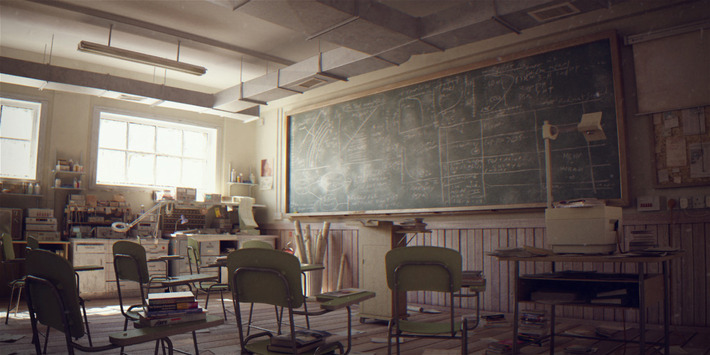
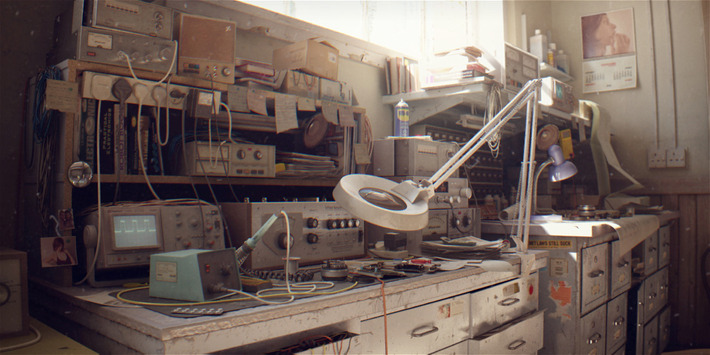
Studio Aiko
This inhouse work was done in the spare time between works of Studio Aiko. There were 4 different lighting versions made: daylight, night, sunny day and camera flash. It was a test for a future project which they were thinking about. It is a good example of how the work made in spare time could be a great training. Rendering of one frame took 1'30" and there were 1300 frames in total. It needed 15 computers to render the whole project.
Software used: 3ds Max, After Effects, Photoshop, V-Ray.
Restaurant in Bordeaux
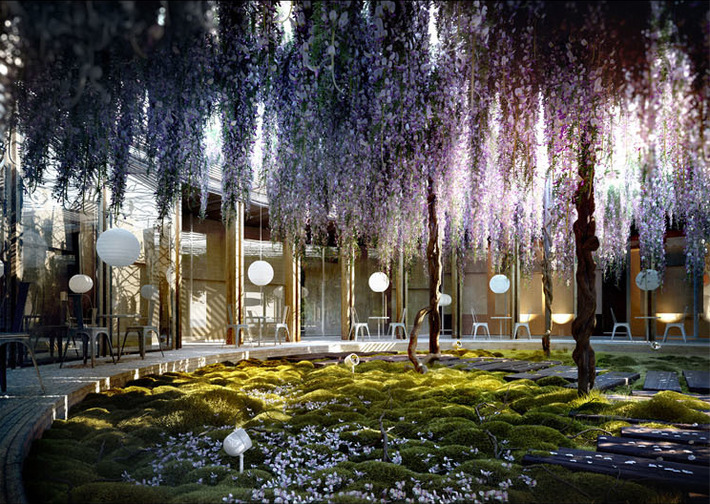
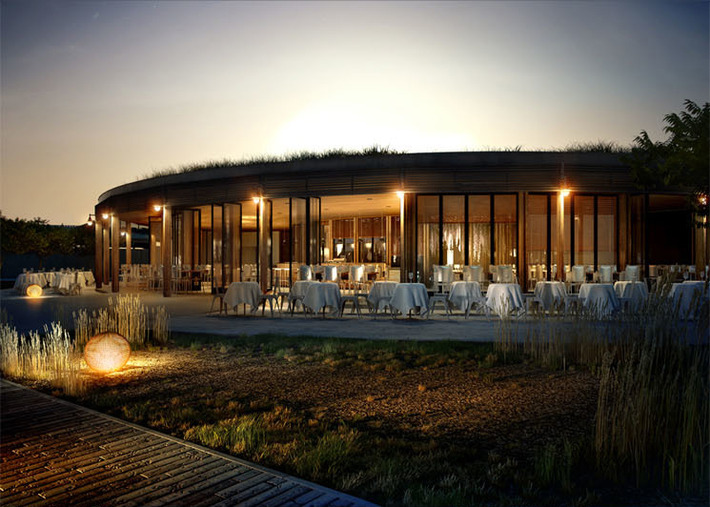

Pawel Podwojewski
Plants, once again. It is a special project in Bordeaux, France and the building is once again surrounded by various plants. It took a while for the artist to model them right. He had a lot of work to do with the falling ones. However, he did it great.
Software used: 3ds Max, V-Ray, Photoshop.
Megalomania
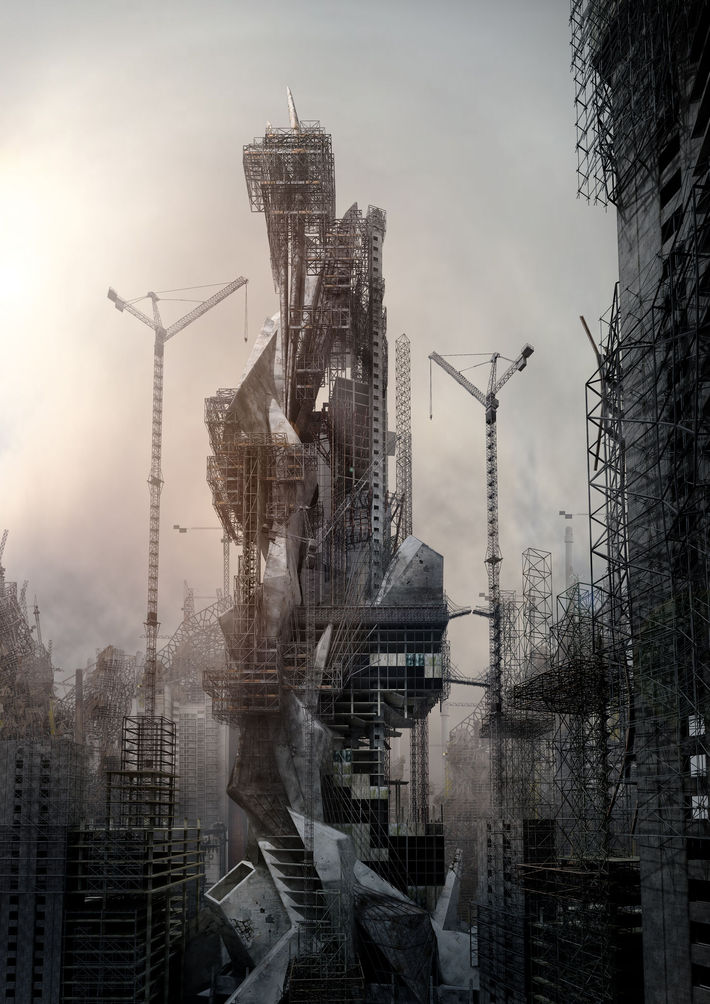
Jonathan Gales
MASSIVE and speechless. This is a 3D rendering from a film made by Jonathan Gales while he was studying for his Master's degree in architecture. We can clearly see that this guy knows a lot about constructions. The film is focused around the city and the fanciful speculations of it.
Film "Megalomania".
Software used: 3ds Max, V-Ray, After Effects.
House on the Coast
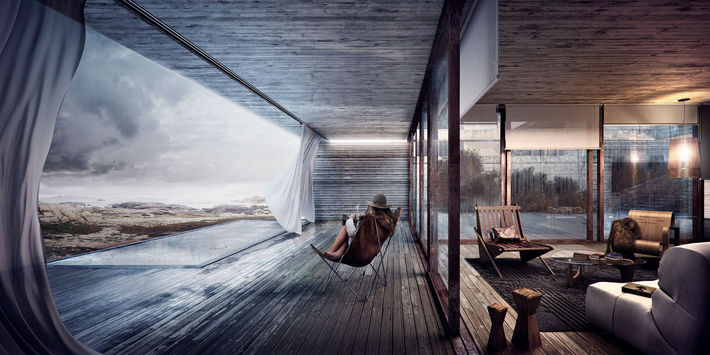
Notos
In case, you do not like the previous house on the coast, we bring you another one from Uruguay. This is an actual client work, not just a piece made for a contest. It was done in two weeks. As you can see, it is raining out there, but it is warm inside. A perfect contrast of cold and warm weather in one 3D rendering.
Software used: 3ds Max, Zbrush, V-Ray, Photoshop.
Winter
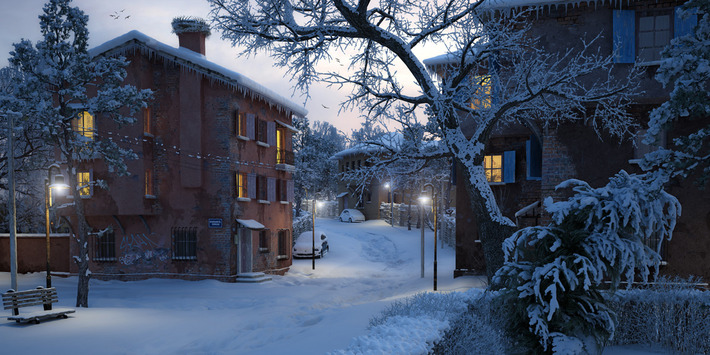
Cihan Özkan
Look at that snow on the trees. It is especially hard to make it look realistic. Do not forget that an artist needs to make it look like the weight of snow is actually having power to outweigh the branches.
Software used: 3ds Max, V-Ray, Photoshop.
Everything Beautiful Is Far Away

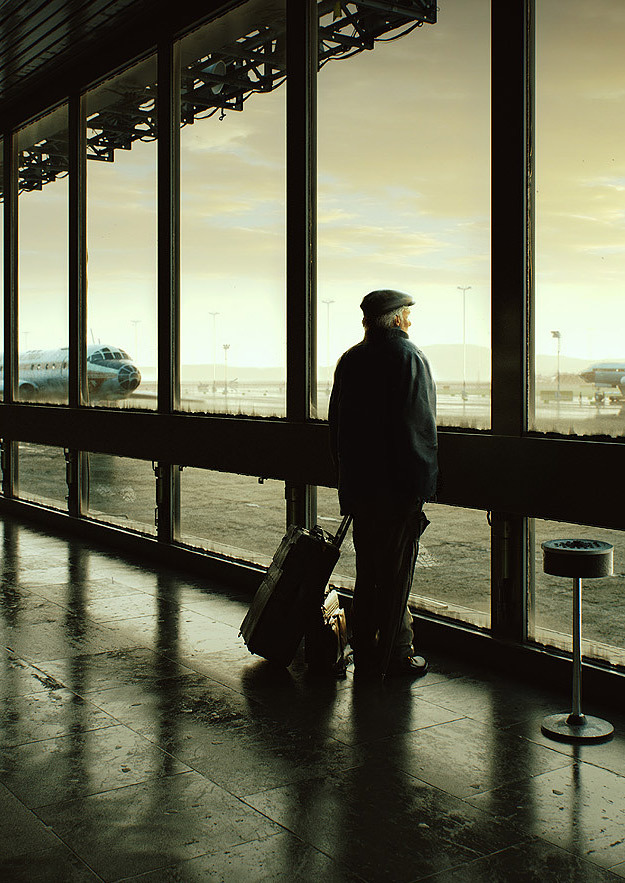
Marek Denko
Here is another brilliant 3D artist's dedication to his family. This 3D rendering had already become classics. It took long hours for Marek to make such an accurate picture of an airport. Just look at the floor! "I know these days airports are quite modern and fancy… but it’s even more unpersonalised with all those duty free shops and fake Irish pubs and pizza restaurants with fake smile or without it. So take a minute and enjoy it," - said Marek Denko.
Software used: 3ds Max, V-Ray.
Malachite Hall Baroque

Marc Gruber-Laux
We are back to Marc Gruber-Laux and his fancy style. This 3D rendering of a marvelous baroque hall took 6 months of his spare time to do. Long enough? Well, just take a look at all these golden ornaments which had to be designed and rendered. It is not a piece of cake. It is a masterpiece of the best cake you could ever imagine.
Software used: 3ds Max, Photoshop.
Street Davis

Gilvan Isbiro
Urbanism at its finest. As author did not tell much about this 3D rendering, it speaks for itself. It is a street of San Francisco. This 3D rendering was named one of the best visualizations in the end of the year 2013 in the prestigious Ronen Bekerman website.
Software used: 3ds Max, V-Ray, Photoshop.
I'm The King
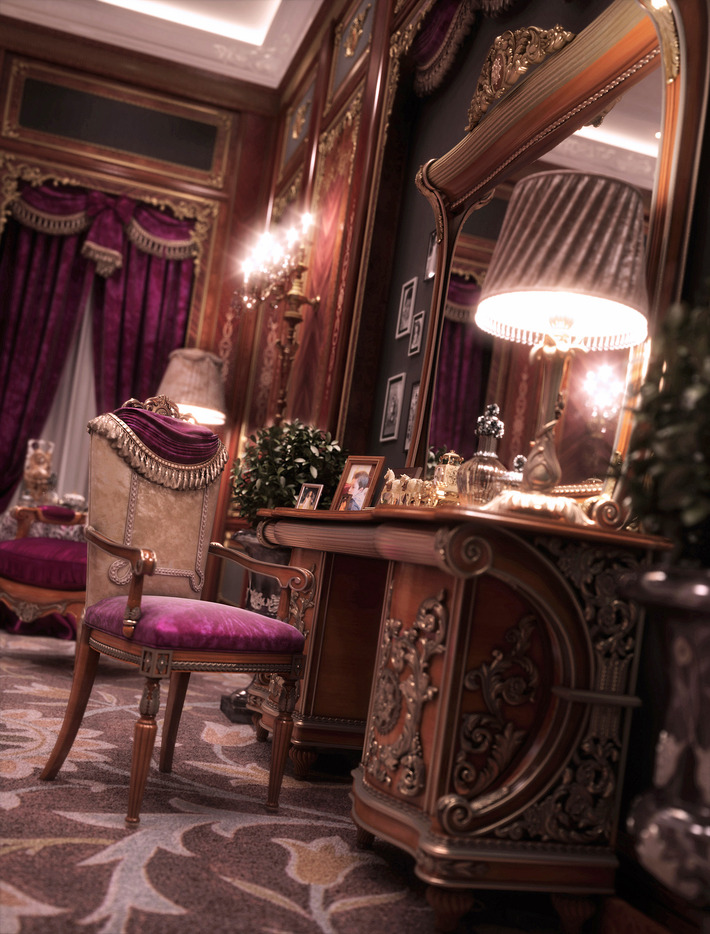
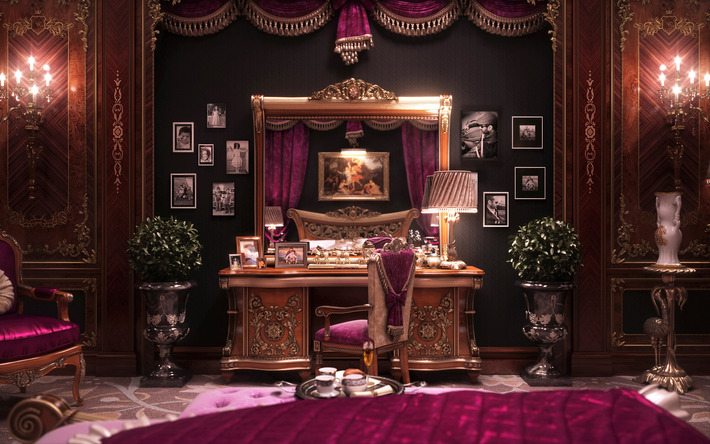
Walid Layouni
Fancy interior, you say? Here is a 3D rendering of a luxurious room. It is done by Walid Layouni in 2012. He is a professional of architechtural interior 3D designs and works on them in Tunisia.
Software used: 3ds Max, V-Ray, Photoshop.
BCN Auditorium
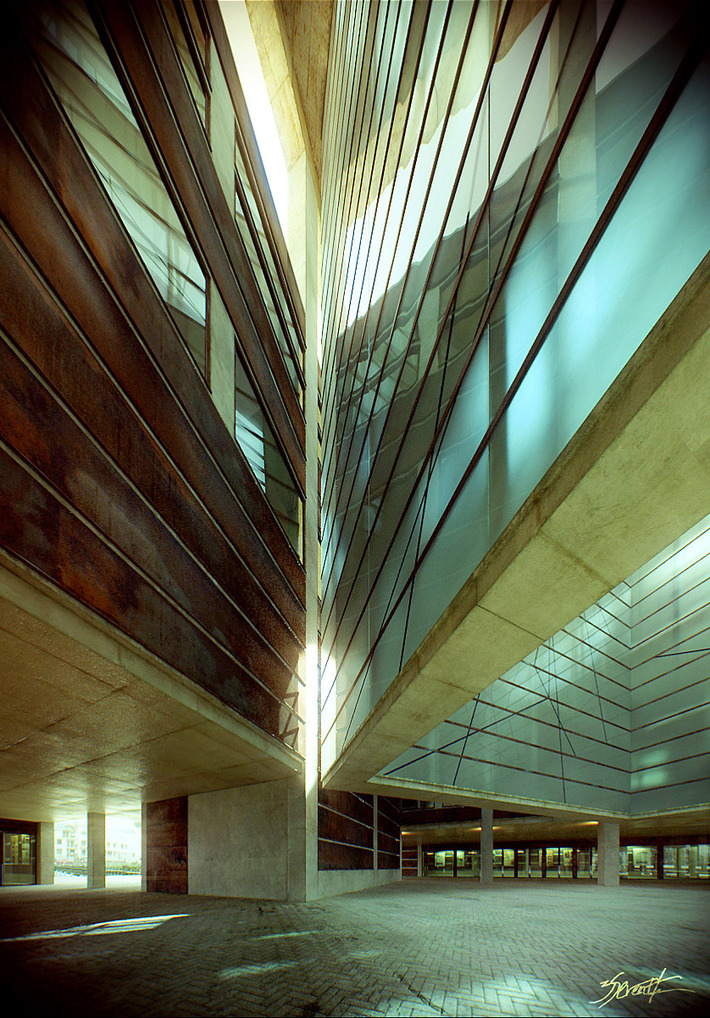

Alex Roman
Back in Spain. Alex Roman brings us to the Barcelona Auditorium. It is a magnificent venue and so is this 3D rendering. Here Alex depicts the exterior courtyard of Auditorium. Take attention and mind all the accurate work which had to be done to create realistic perspectives.
Software used: 3ds Max, After Effects, Photoshop, V-Ray.
CG Garden

Marek Denko
It may look like a standard 3D rendering of a garden. It even could be Marek's garden. It looks so simple and empty. However, if you check the high resolution image, you will see how detailed it is. You do not believe us? Then check the animation.
Software used: 3ds Max, V-Ray.
Office Building Warsaw
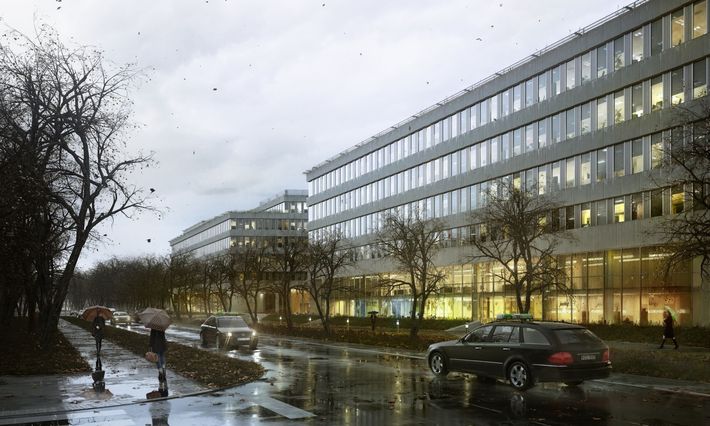
Fama Advertising Agency
Fama Advertising Agency made a great job turning a simple building into something extraordinary with 3D modeling. Each window contains visuals with different objects. But there is one thing which is even more amazing - the leaves in the air. You can feel the wind blowing there in Warsaw.
Software used: 3ds Max, V-Ray.
Phillips Exeter Academy Library
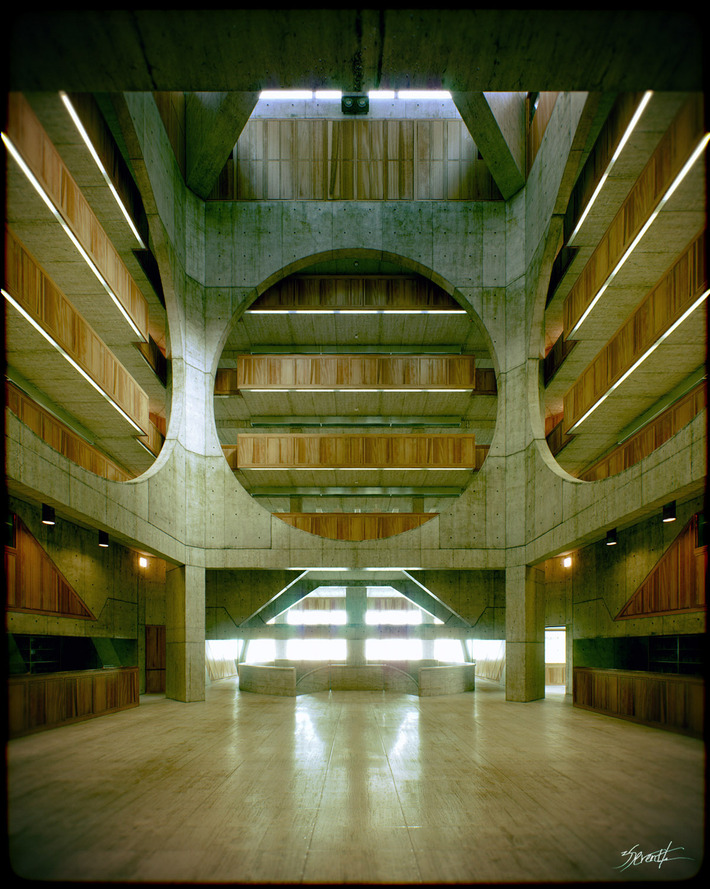
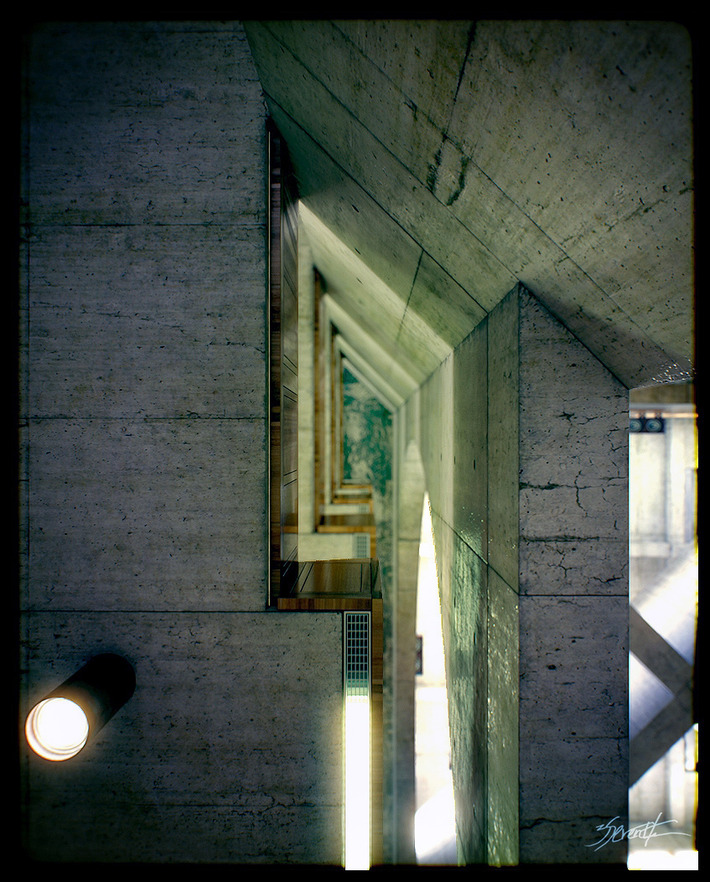
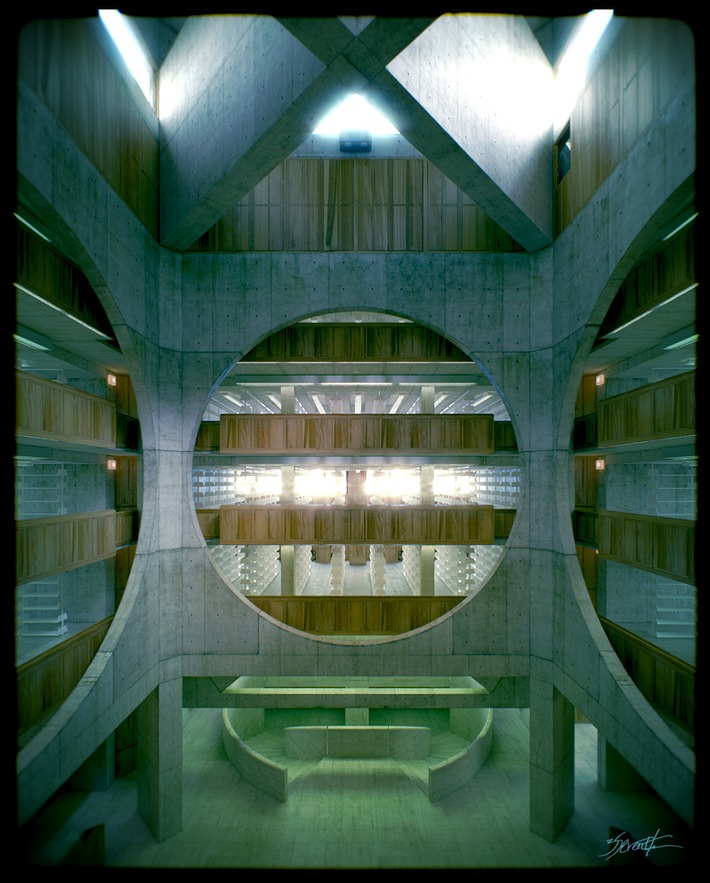
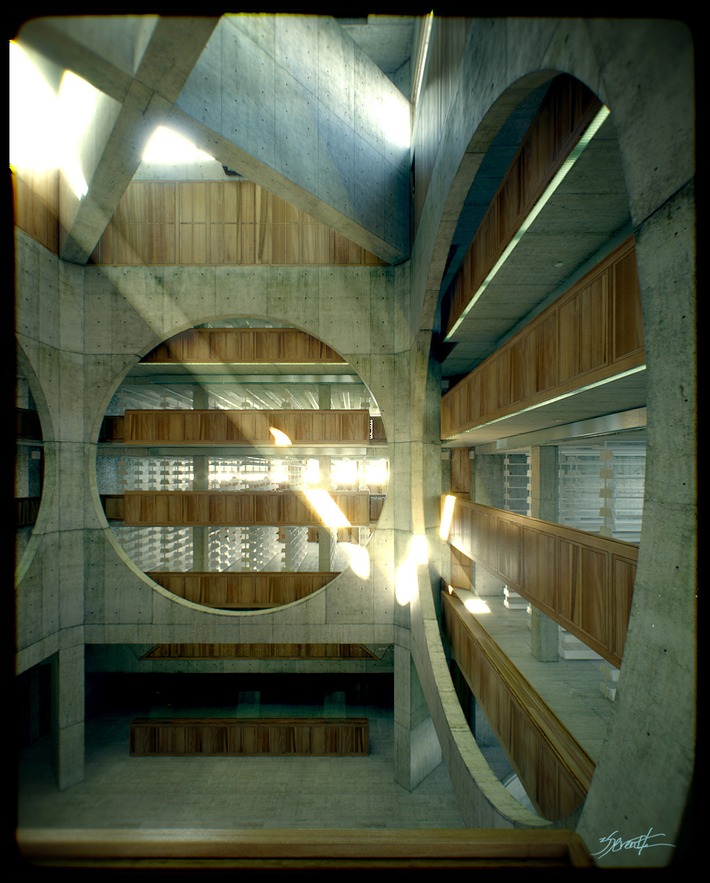
Alex Roman
Ladies and gentlemen, take your seats. This 3D rendering was made 5 years ago, but it is still an exemplary work. It could be easily placed in the handbooks of 3D modeling and photorealism. The size and quality details make it one of the best architectural photorealistic 3D renderings ever made. "After studying Louis Kahn works, I finally decided do to this one. A bit playaround with volumes, materials and lighting, of course. I also decided to leave it without books. It's more like a raw geometrical space. I also wanted to keep it clean from the beginning but it became more and more rusty and grunge," - said Alex.
Software used: 3ds Max, After Effects, Photoshop, V-Ray.
Tokyo Jewel Box


Dmitri Revyakin
The design of this building, which was built in Tokyo, was created by architect Tadao Ando, while the 3D rendering was done by a talented professional 3D designer Dmitri Revyakin from Ukraine. Shiny metal construction and a lot of differently angled surfaces required a lot of time. Lighting is done very professionally - it is the essential part of this rendering.
Software used: 3ds Max, After Effects, Photoshop, V-Ray.
Welsh National Assembly
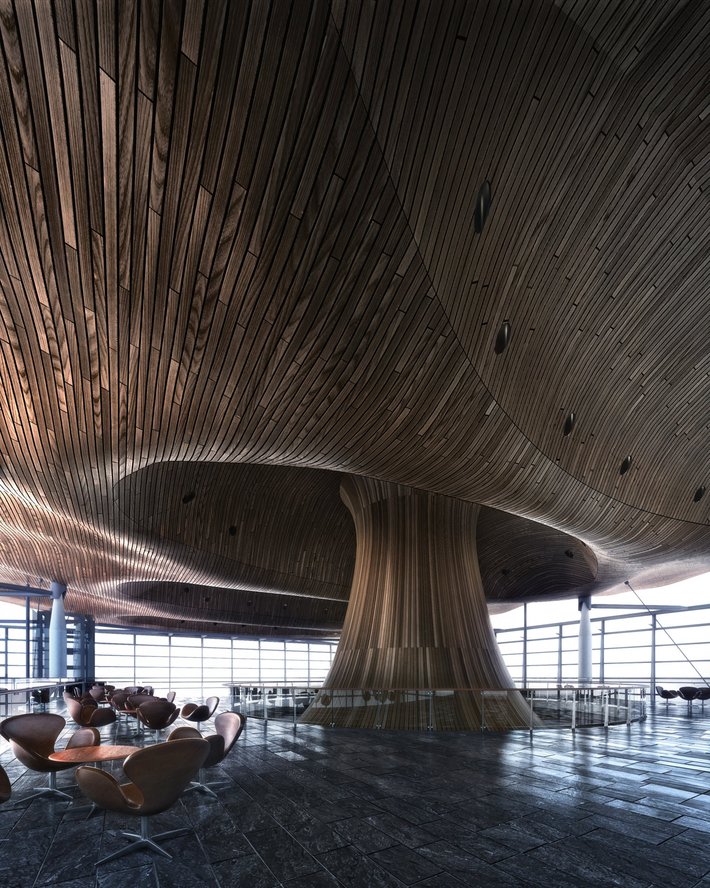
Guillaume de Brabandère
The debating chamber of the Senedd was designed by Richard Rogers. You can see the hall of that building here. This 3D rendering has been done by Guillaume de Brabandère. As he once told, he did this only for fun, but it is a highly technical 3D rendering. That is so true - check it yourself.
Software used: 3ds Max, V-Ray, Floor Generator.
Rooftops, Rockets And Adventures Beyond
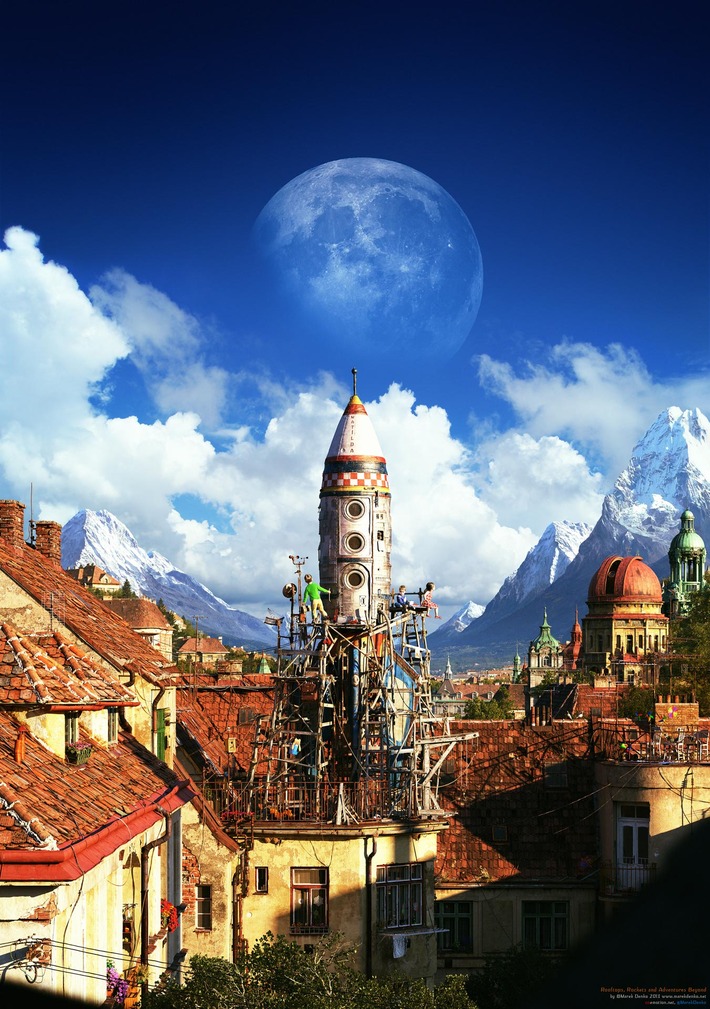
Marek Denko
Once again, he is back. The one and only... Marek Denko. This 3D rendering does not need any broad introduction. This marvelous fairy-tale kind of utopia is a present from Marek to his kids. He took a 2 years break and after that he finished this video project before Christmas of 2012.
Software used: 3ds Max, V-Ray.
Fireplace
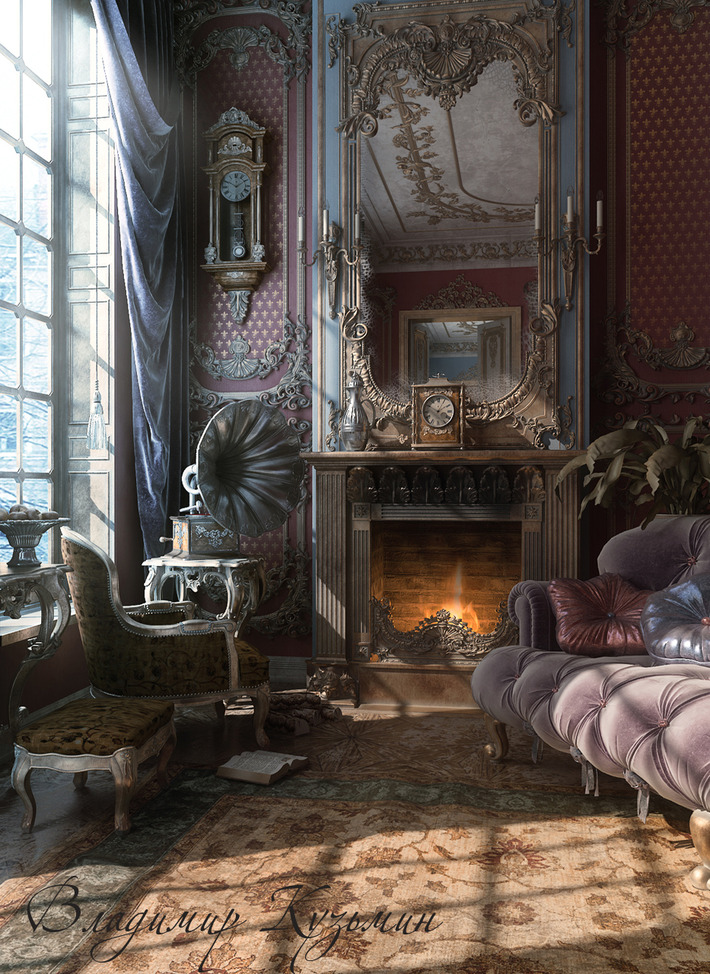
Vladimir Kuzmin
Extraordinary photorealistic 3D rendering usually takes two weeks to be done. We can make such a conclusion, as this is not the only one 3D rendering which took approximately 14 days to make. This time it is done by Vladimir Kuzmin, who made the rendering of this vintage living room with a fireplace. Once again, lighting is the main factor out here. However, we should not miss the details of objects which are depicted in this picture.
Software used: 3ds Max, V-Ray, Photoshop.
White Bedroom
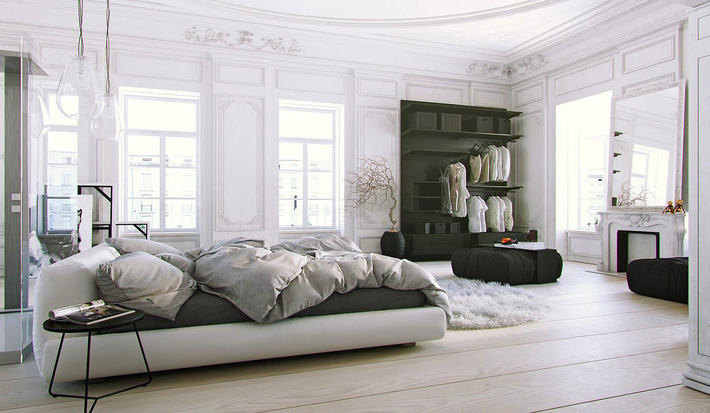
Juraj Talcik
We are back in white bedroom. This time it is even more complex. Furniture was modeled by Juraj's team member Veronika Demovicova in MarvelousDesigner. Author said that it is one of the most complex 3D designed beds. The minimalism of white and black colors and the lighting make this 3D rendering special.
Software used: 3ds Max, V-Ray.
Venezia
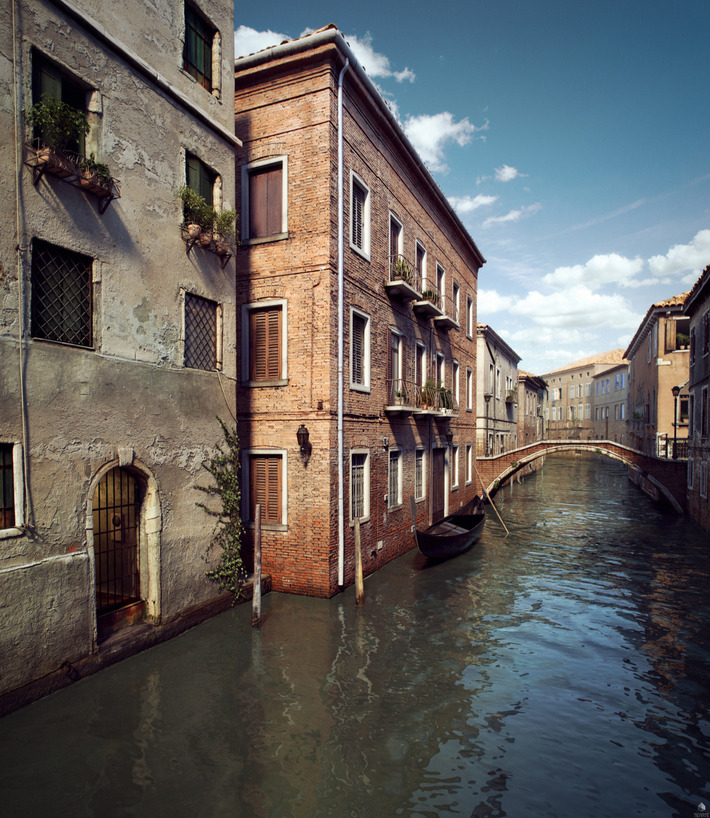
Rafael Reis
Let's go to Venice, the city which is known for its canals and bridges which cross them. Rafael Reis, who is a 3D designer himself, is known for photorealistic 3D renderings. Do you think that those reflections on the water are easy to make? Well, it is hard. Remarkable work.
Software used: 3ds Max, Mudbox, V-Ray, Photoshop.
Moroccan Majlis
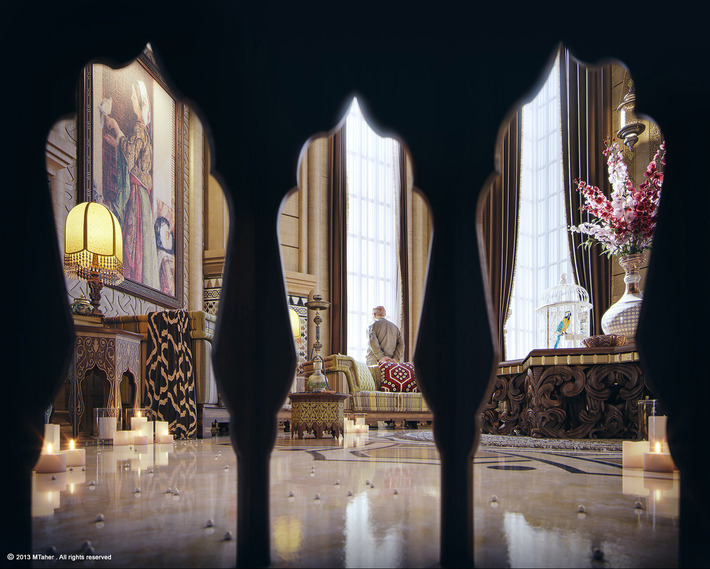
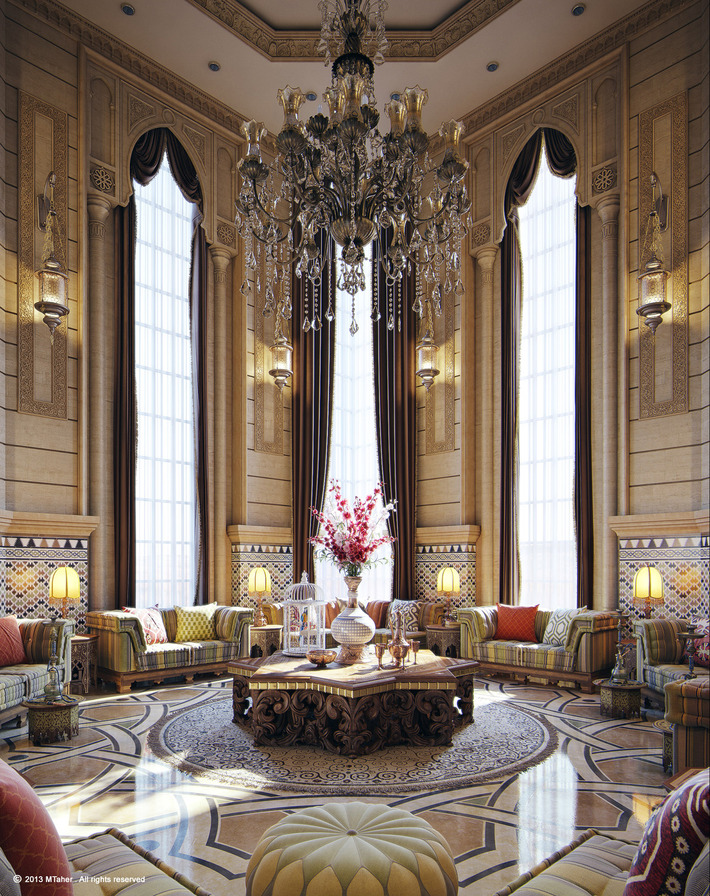
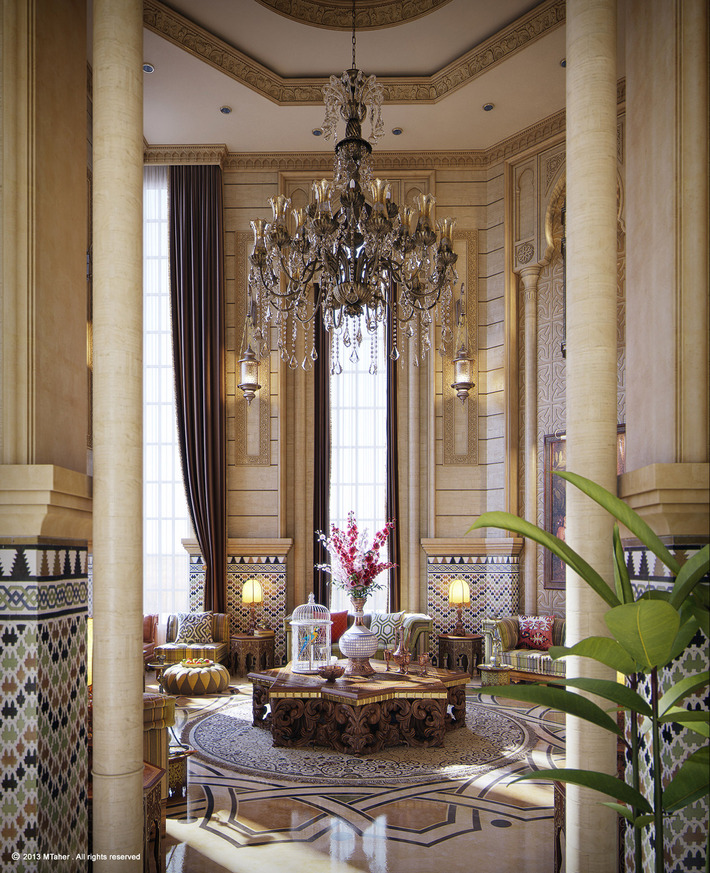
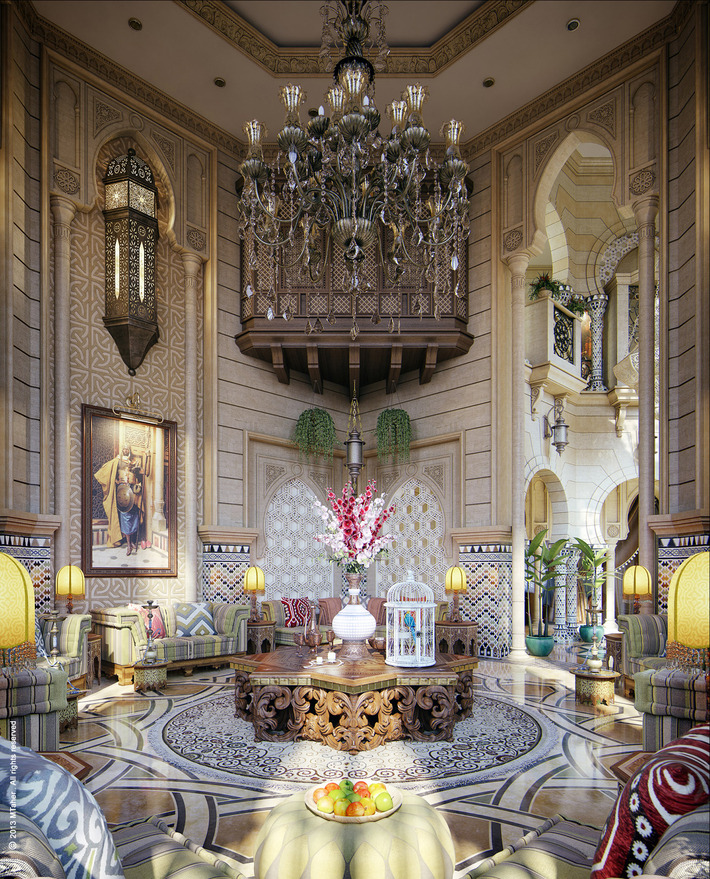

Muhammad Taher
This is the end, dear friends. It is Doha, Qatar and it is definetely the best place to end this fantastic journey around the world while looking at the most photorealistic architectural 3D renderings. This might be the most colorful one. Just look at it and enjoy the Persian style of architecture. Too real to be true, huh?
Software used: 3ds Max, V-Ray, Photoshop.




Comments